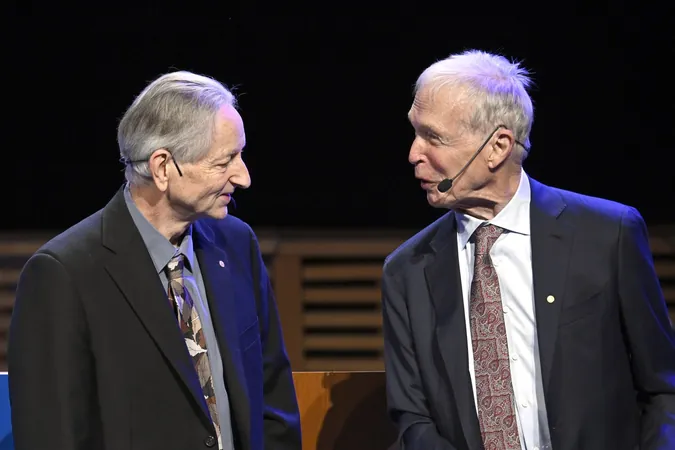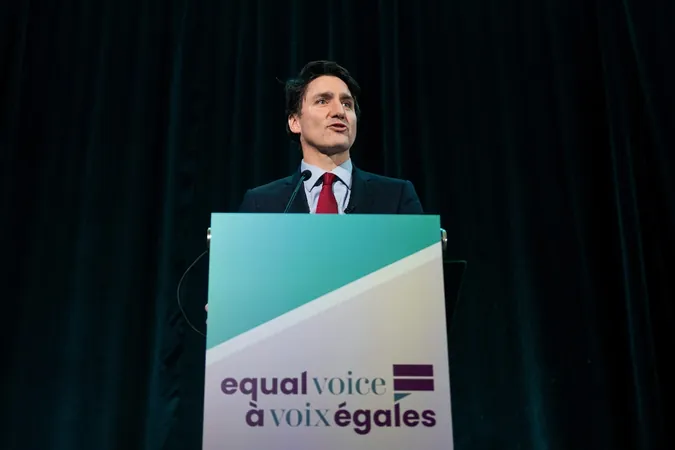
The Revolutionary Contribution of Hinton and Hopfield to AI: A Nobel-Worthy Breakthrough in Physics
2024-12-08
Author: William
Geoffrey Hinton and John Hopfield, two titans in the realm of computer science, are poised to be awarded the Nobel Prize in Physics for their groundbreaking work on artificial neural networks. The ceremony, scheduled for Tuesday in Stockholm, celebrates their pioneering efforts in harnessing physics to enable machines to learn autonomously, without explicit programming directives.
Artificial neural networks serve as the bedrock of machine learning, a domain within artificial intelligence that employs data and algorithms to replicate cognitive functions similar to those of the human brain. These innovations have transformed various industries by enabling functionalities such as image recognition, natural language processing, and predictive analytics.
The journey towards this esteemed accolade began with John Hopfield’s creation of the Hopfield network in 1982 during his time as a professor at Princeton University. This innovative architecture is designed to recall and reconstruct images from data, mimicking the associative memory process humans use for recognition and recollection. For example, if presented with a partially obscured image of a dog, the Hopfield network can draw upon its stored memory patterns to predict the concealed aspects of the image and accurately identify it.
Hinton, who joined the conversation in 1985 while at Carnegie Mellon University, built upon Hopfield's concept by developing the Boltzmann machine. Named after the renowned physicist Ludwig Boltzmann, this machine operates on the principle of learning through examples rather than direct instructions. It can identify patterns and generalize from them, much like how humans can recognize familial traits in a relative they have never met.
The implications of these deep learning systems are vast. The Boltzmann machine not only facilitates image classification but also plays an essential role in recommendation systems, suggesting movies or books based on users' preferences and historical interactions. As AI technology continues to evolve, we see applications across various fields including healthcare, finance, entertainment, and autonomous vehicles.
Both the Hopfield network and Boltzmann machine are heralded as fundamental developments that have shaped modern artificial intelligence. Hinton, often called the 'godfather of AI,' previously won the prestigious A.M. Turing Award alongside fellow innovators Yoshua Bengio and Yan LeCun in 2018.
The recognition of Hinton and Hopfield’s contributions through the Nobel Prize underscores the profound intersection of physics and computer science in driving forward the capabilities of artificial intelligence. Their work not only cements their legacies in academia but also heralds a future where AI continues to reshape our interaction with technology in revolutionary ways.
This monumental achievement in the scientific community is not just a celebration of past accomplishments but a beacon of hope for future advancements in AI technology. What will the future hold for AI now that its foundational theories have been honored on such a prestigious platform? Stay tuned as we follow this pivotal moment in the world of science and technology!









 Brasil (PT)
Brasil (PT)
 Canada (EN)
Canada (EN)
 Chile (ES)
Chile (ES)
 España (ES)
España (ES)
 France (FR)
France (FR)
 Hong Kong (EN)
Hong Kong (EN)
 Italia (IT)
Italia (IT)
 日本 (JA)
日本 (JA)
 Magyarország (HU)
Magyarország (HU)
 Norge (NO)
Norge (NO)
 Polska (PL)
Polska (PL)
 Schweiz (DE)
Schweiz (DE)
 Singapore (EN)
Singapore (EN)
 Sverige (SV)
Sverige (SV)
 Suomi (FI)
Suomi (FI)
 Türkiye (TR)
Türkiye (TR)